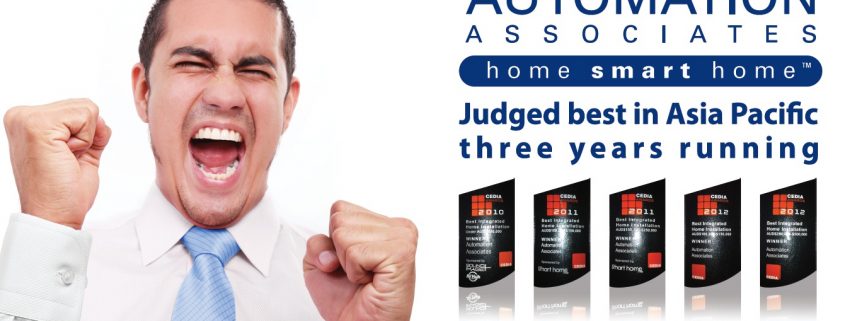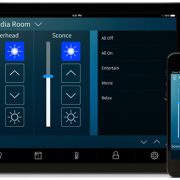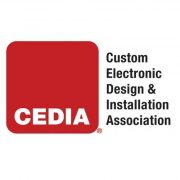The inside word on home automation
The inside word on home automation
CEDIA is the worldwide (not for profit) industry organisation which exists for the benefit of home automation, custom installation and manufacturing companies in almost every developed country in the world. The CEDIA trade show was on earlier this week and saw three NZ companies take out five of the thirteen Asia Pacific awards, Urbis Designday participants Automation Associates took out two awards for Best Integrated Homes, Asia Pacific.
Also as part of the show, Rich Green came over from Silicon Valley. He is recognised as one of the foremost A/V system designers, having worked with many prominent clients including Gene Siskel and Roger Ebert, Rush Limbaugh, Larry Ellison, and Steve Jobs. We ask him what this home automation stuff is all about.
Urbis: What is home automation?
Rich Green: Let’s make a distinction between control and automation. With home controls, you have devices that switch and adjust things. These may include simple light switches, motorized window shades and thermostats. Making something happen requires human intervention. People walk up to a thermostat and adjust the temperature. Simple enough. Now add home automation. Automation can remove the need for a person to make a decision and act on a control – it happens in the background and can simplify the laborious and repetitive use of simple controls.
With clever home automation, as opposed to simple controls, complex tasks can be initiated by various triggers and executed with transparency in the background. This is a much more elegant approach to modern living in homes that often have complex technology. A common scenario in homes with technology designed by CEDIA professionals uses automation to improve energy efficiency and comfort at the same time. Occupancy sensors will know if someone is home and using a certain room. If the room is not in use, the home automation system can be programmed to turn off the lights, lower the window shades and set back the thermostat in an effort to save on energy costs. The moment someone comes home, or walks into the room, the automation system will reverse the process and prepare the room for elegance and comfort, with no need for the family member to fiddle with switches or controls. Home automation is often the most useful application of technology in the home, yet when done right by sensitive designers, it never calls attention to itself. Automated homes have a certain grace about them.
That could sound a bit complicated. What does home automation add to a house? Why bother?
RG: Automation makes mundane and time consuming tasks disappear. When expertly designed and installed, a home automation system can transform a technical nightmare into an experience of ease and joy. For my more social clients, I often recommend the “one-button party” function. Let’s say you’ve planned a dinner party with several of your best friends but you were stuck all day at work. Upon your arrival, all you need to do is press one button on a programmed touch panel or your iPad, and the house will wake up and set the stage for your guests. Lights dim into beautiful scenes, music plays from your favorite collections, the front gate opens and the fountain starts bubbling. All you would need to worry about is getting the meat on the BBQ and pop open a few bottles of wine. Automation can be a real time saver and makes the best use of your home’s resources.
Why bother? There are so many reasons to automate a home. Turn the lights off after the kids leave them on, have a few lights come on and off at night while you are traveling to make the home seem lived in, create the simplest button push to set your home theater for optimal performance without any fiddling of that basket full of remote controls. It’s fun, it saves time and it makes the home run much more efficiently.
What are the most common ways of incorporating automation into a house?
RG: There are two large categories of home automation: taming media and environmental comfort with efficiency. When taming media, the mission is to bring the myriad sources of music, movies, TV and games into one simple, easy to understand control interface. The iPad, for example, has become outrageously popular for home controls and automation just this past year. It’s affordable, and can be used to integrate various applications for finding and enjoying digital media. The iPad still needs to communicate with a wide variety of electronics, and they don’t always behave nicely. That is when you should work with a professional electronic systems contractor. CEDIA trained and certified technicians know exactly how to tame electronics and integrate them with simple interfaces like the iPad. It can be a bit maddening when attempting it yourself.
The other category of automation is environmental comfort. We already talked about the smart integration of lights, thermostats and window shades. Tying these systems into occupancy sensors or time-of-day preset scenes can make a complex home a real joy to live in. We can automate for safety as well. I love automating garage doors so they close at night when accidentally left open.
Where is all this technology heading? What are some cool things we can expect to do in a few years that use automation?
RG: The future of home automation technology is about to get really exciting, and very practical too. We have three major developments unfolding this year: Energy Monitoring and Management, Digital Home Health and Home Office technologies. Together, I like to think of these technologies as supporting “Sustainable Lifestyles.” We can encourage much more responsible behaviors while improving the well-being of families. The basic ideas are to make it very easy for families to turn things off, stay out of cars and stay out of airplanes. A lot of good can come from those lifestyle adjustments.
Energy Monitoring and Management is becoming popular because of Smart Grid initiatives. This is happening all over the world. CEDIA professionals have been on top of this development from the start. We start by measuring the electricity, water and gas that a family uses over time. That data is then massaged into a graphical dashboard that is displayed on web browsers, touch panels, iPhones and iPads. Once you show a family how much energy they are consuming they will always use less. On average, 10 to 15% less. This is significant. Now add some clever automation based on this data and real savings can happen. This is the new trend in home automation; maximize well-being and consume less at the same time.
Digital Home Health is one of my personal favorites. This is an automation environment that helps older people age at home, with dignity, comfort and safety. Huge corporations are supporting this technology simply because there aren’t enough health care facilities to support the aging population. Costs are much, much lower when people can take care of themselves from home. Digital Home Health technologies include motion sensors and cameras (to keep an eye on grandma), toilet sensors, medicine dispensers, equipment for reading and reporting blood pressure, blood sugar, weight, etc. The absolute coolest technology behind Digital Home Health is Home Telepresence. This is a new breed of video conferencing equipment that works on the Family Room TV. Cisco makes one called Umi, and Logitech has it built into their new Google TV box. With Home Telepresence, grandma can have an open window to her grandchildren all day long. It keeps old people connected and social. Putting a Home Telepresence system in a loved ones house will add years to their life. Being social is a fundamental human need.
The third new development is a resurgence of Home Office technologies. Yes, we can use Home Telepresence in the office too. Various other collaborative technologies can be added to help people stay home, close to their families while greatly reducing the need for travel.
Do you have a favourite gadget?
RG: Yes, it’s my iPhone 4. I’ve never had a piece of gear that is so sexy, emotionally connected and elegant. Apple totally gets it. When you touch someone emotionally, you win their loyalty. The future of technology is emotional. Technology will serve humanity instead of enslaving humanity. There are so may sensibly designed, human-scaled technologies in development right now. We have a lot to look forward to.
URBIS
Blog 17 May 2011 by Nicole Stock
Winning home automation project with automation designed by Automation Associates.










